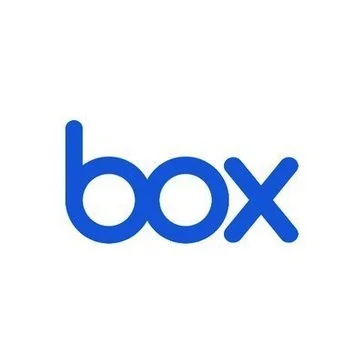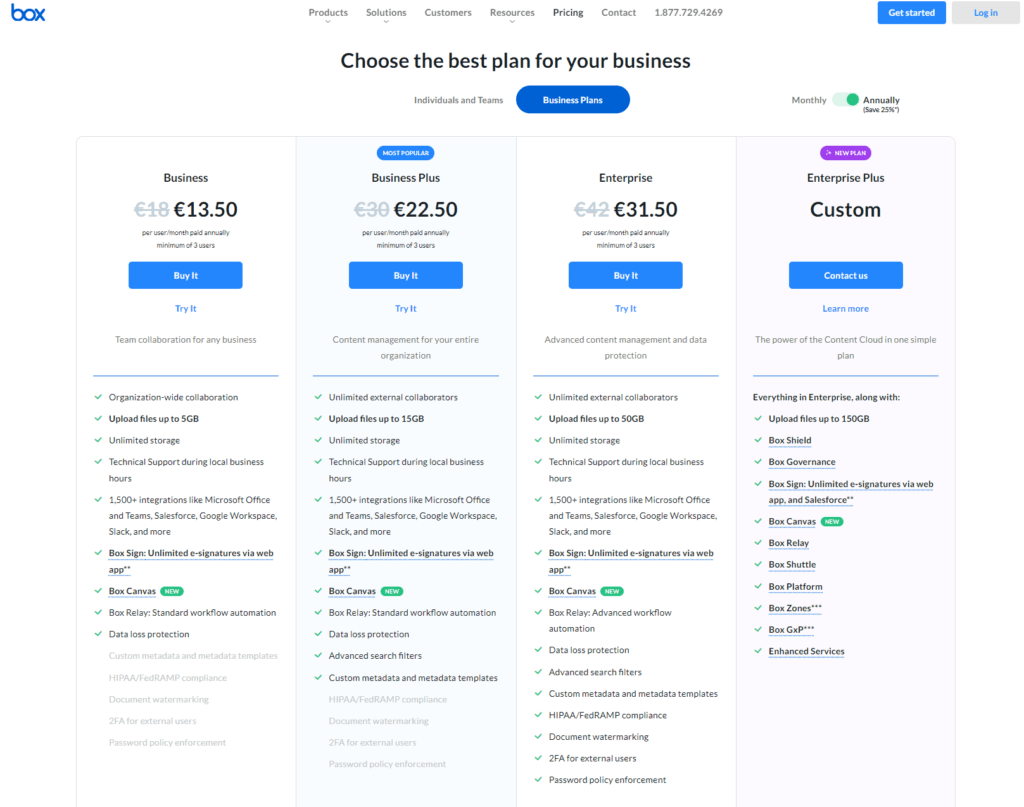In the ever-evolving world of digital document management, choosing the right tool can feel like navigating through a dense jungle. Among the towering giants of this jungle, M-Files and Box stand out—not just for their size but for their unique approaches to helping you manage your documents. One promises an intelligent, metadata-driven experience that transforms how you interact with your documents, while the other offers a robust, user-friendly platform that integrates seamlessly into your existing workflows. But which one is right for you? Let’s dive into the heart of their offerings, starting with a critical aspect for any business: Usability.
| M-Files | Box |
|---|---|
 |  |
| G2 Score -4.3 out of 5 | G2 Score -4.2 out of 5 |
| TrustRadius Score -9.2 out of 10 | TrustRadius Score -8.2 out of 10 |
Usability: The User Experience at the Forefront
The usability of a document management tool is like the ease of turning pages in a book. If the pages stick together or the text is hard to read, you’re less likely to enjoy the reading experience. Similarly, a document management system needs to be intuitive and straightforward to ensure that your team can find, share, and collaborate on documents without a steep learning curve. Here’s how M-Files and Box compare when it comes to user-friendliness.
M-Files: Intuitive Meets Intelligent
M-Files takes a novel approach to document management, focusing on the content of documents rather than where they’re stored. This means you don’t navigate through traditional folders but instead find documents based on what they are—an invoice, a project plan, a contract—regardless of their location in the system. It’s a paradigm shift that requires some adjustment but ultimately aims to make your documents work for you, not the other way around.
The platform uses metadata and AI to categorize and manage documents, which can significantly streamline operations once your team is up to speed. M-Files also offers a dynamic interface that adapts to user preferences and behaviors, further enhancing its usability. However, the initial learning curve can be steeper compared to more traditional systems, but many find the efficiency gains well worth the effort.
Box: Simplicity and Integration at Its Core
Box, on the other hand, champions a more traditional, user-centric approach to document management. Its strength lies in its simplicity and the seamless way it integrates with a vast array of other tools and platforms. The interface is clean and intuitive, making it easy for new users to get started without extensive training.
Box excels in collaboration, offering robust features like file sharing, commenting, and task assignment directly within the platform. Its integration capabilities mean that documents stored in Box can be easily accessed and edited within other applications like Microsoft Office and Google Workspace, keeping your team’s workflow smooth and uninterrupted.
Pricing: Balancing Cost with Value
The true cost of a document management system includes not only its sticker price but also the value it brings to your operations. Here’s how M-Files and Box approach their pricing strategies.
M-Files: Customized Pricing for Tailored Solutions

M-Files does not follow a one-size-fits-all pricing model. Instead, it offers customized pricing based on the specific needs and scale of your organization. This approach reflects M-Files’ emphasis on providing a tailored document management solution that fits precisely with your business requirements.
The pricing for M-Files is typically determined by several factors, including the number of users, the level of customization needed, and the specific features and integrations your business requires. M-Files encourages potential customers to contact them directly for a quote, ensuring that the price you pay is aligned with the value you receive.
This customized pricing model allows for significant flexibility but also means that businesses need to engage with M-Files sales representatives to understand fully the potential costs involved. It’s an approach that works well for organizations looking for a highly customized document management solution and are willing to invest in a system that is precisely tailored to their needs.
Box: Transparent, Tiered Pricing for Scalability

In contrast, Box offers a transparent, tiered pricing model that allows businesses to easily understand and anticipate their costs. Box’s pricing tiers are designed to cater to a range of business sizes and needs, from individual professionals to large enterprises. Free or very low-cost options designed for individual users.
Starting with a basic plan that includes core features suitable for small teams, with prices scaling based on additional features, storage, and support levels. For larger organizations requiring advanced security, compliance features, and personalized support, Box provides customized enterprise solutions.
Box’s clear, upfront pricing makes it easy for businesses to select a plan that fits their current needs while providing the flexibility to scale up as their requirements grow. This model is particularly appealing for businesses that value transparency and predictability in their software investments.
Integration Capabilities: The Key to a Connected Workspace
A document management tool’s value significantly increases when it can seamlessly blend into your existing digital ecosystem. Let’s see how M-Files and Box enhance your workflow through their integration capabilities.
M-Files: Tailored Integration for a Seamless Experience
M-Files doesn’t just store your documents; it integrates them into your daily work processes. Its approach to integration focuses on creating a seamless bridge between your documents and other business applications. This is achieved through a combination of native integrations, API access, and an ecosystem of partners that extend M-Files’ capabilities into ERP, CRM, and productivity tools.
One of the standout features of M-Files is its ability to integrate content across various platforms without duplicating data. This means you can access and manage documents in M-Files directly from within applications like Salesforce, Microsoft Dynamics, and even custom software. This deep integration capability ensures that your document management system enhances your existing workflows, rather than disrupting them.
Box: Broad Connectivity for Enhanced Collaboration
Box positions itself as a central hub for all your content management needs, emphasizing its extensive range of integrations with over 1,400 apps including leading productivity suites like Microsoft 365, Google Workspace, and Slack. This broad connectivity is part of Box’s commitment to enhancing collaboration within teams and across organizations.
What sets Box apart is not just the quantity of its integrations but the quality. The platform ensures that documents stored in Box can be easily accessed, shared, and edited within other apps, fostering a collaborative environment without the need to switch between different tools constantly. Furthermore, Box’s robust API allows for custom integrations, offering flexibility to tailor the system to your business’s specific needs.

Related: Check out our free SEO suite

Security and Compliance: Fortifying Your Digital Fortress
In the digital age, the security of your document management system and its compliance capabilities aren’t just features; they’re necessities. Let’s see how M-Files and Box ensure your data is not only secure but also managed in compliance with legal and industry standards.
M-Files: Precision Security Meets Adaptive Compliance
M-Files takes a comprehensive approach to security, focusing on protecting sensitive information through precise access controls and robust encryption. It employs a unique metadata-driven system that allows for granular control over who can access specific documents, based on their role, project, or any other criteria you define. This ensures that sensitive information is only available to authorized users, minimizing the risk of internal and external breaches.
On the compliance front, M-Files shines with its adaptive approach, designed to meet the needs of various industries and regulatory standards. Whether you’re navigating the complexities of GDPR, HIPAA, or ISO certifications, M-Files provides the tools to help ensure compliance. This includes maintaining comprehensive audit trails, managing document retention policies, and automating compliance processes. M-Files not only aims to keep your documents secure but also to simplify the often complex compliance landscape for your business.
Box: Broad Security Measures with Global Compliance
Box approaches security with a broad suite of measures designed to protect data across all points of interaction. It offers robust encryption, both at rest and in transit, along with advanced threat detection to guard against unauthorized access. Box’s security model also includes comprehensive user permissions, secure sharing options, and the ability to track user activity and document history, providing a strong defense against a wide array of digital threats.
When it comes to compliance, Box boasts a global perspective, offering support for a wide range of international and industry-specific regulations. This is facilitated through its extensive compliance certifications, including GDPR, HIPAA, FINRA, and more. Box also provides governance and compliance tools that help businesses manage data policies, enforce legal holds, and conduct e-discovery, making it easier for organizations to meet their compliance obligations and respond to legal challenges.
Scalability and Flexibility: Growing with Your Business
A document management system should not only meet your current needs but also have the capacity to accommodate future growth and changes in your business processes. Let’s examine the scalability and flexibility of M-Files and Box.
M-Files: Dynamic Adaptability for Evolving Needs
M-Files is designed with a focus on adaptability and growth. Its unique metadata-driven approach allows for a highly flexible system that can easily accommodate changes in your business structure, processes, and volume of documents. Unlike traditional folder-based systems, M-Files organizes documents based on what they are, not where they’re stored, making it easier to scale and modify your document management practices without overhauling your entire system.
Additionally, M-Files offers robust customization options and a wide range of integrations that can be tailored to fit the specific needs of your business. As your organization grows or shifts direction, M-Files can evolve with you, adding or adjusting functionalities as needed. This makes M-Files a powerful option for businesses anticipating significant changes or growth.
Box: Scalable Solutions for Businesses of All Sizes
Box is renowned for its scalability, offering solutions that cater to individuals, small teams, and large enterprises alike. Its tiered pricing model and extensive range of features make it easy for businesses to start with what they need and scale up as they grow. Box’s cloud-based infrastructure ensures that scaling up in terms of storage or adding more users is seamless, without the need for significant IT infrastructure changes.
Furthermore, Box’s commitment to integration and collaboration means that it plays well with other tools and services that businesses might adopt as they grow. The platform’s ease of use and emphasis on collaboration make it an ideal choice for businesses looking to scale their operations while maintaining efficiency and team synergy.
Conclusion
Both M-Files and Box stand out as powerful contenders in the document management space, each with its unique advantages. M-Files may be the better choice for organizations looking for a highly customizable, intelligent system that can adapt to complex, evolving needs. On the other hand, Box could be the ideal solution for businesses seeking a user-friendly, scalable platform that emphasizes collaboration and integrates effortlessly with a wide range of applications.
READ NEXT:
- Delivra vs EmailOctopus: The Best Email Marketing Tool for You
- Delivra vs MailUp: The Best Email Marketing Tool for You
- Sendy vs Delivra: The Best Email Marketing Tool for You
- Revver vs Quip: The Best Document Management Tool for You
- 21+ Top Document Management Software for Businesses: A Deep Dive
- 23 Tips to Perfect Your Outbound Prospecting Strategy





















